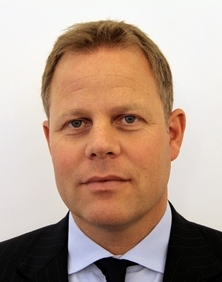Interview: John Arne Wang, SEB
Sep 13th, 2012
The Covered Bond Report’s Neil Day spoke to John Arne Wang, head of treasury management at SEB, about the bank’s recent tier two issue and its funding strategy.
Why did you issue a tier two deal last week?
Over the last several years SEB has called and repurchased a large volume of outstanding Tier 2 capital instruments, without issuing any new such instruments. The strategy has instead been to improve the quality of the regulatory and economic capital base by means of a rights issue, capital formation through income generation and issuance of Tier 1 hybrids with enhanced loss absorption characteristics.
 On 28 September SEB will be calling its last Lower Tier 2 instrument with the approval of the Swedish FSA (SFSA). After this call, SEB will only have a very limited amount of outstanding Tier 2 instruments (two Japanese yen Upper Tier 2 loans of about Skr2.2bn in total).
On 28 September SEB will be calling its last Lower Tier 2 instrument with the approval of the Swedish FSA (SFSA). After this call, SEB will only have a very limited amount of outstanding Tier 2 instruments (two Japanese yen Upper Tier 2 loans of about Skr2.2bn in total).
Lately, it has become more and more clear that new forms of Tier 2 capital will play an important role in the future regulatory capital structure of banks. The main rationale for the recent transaction was to prudently and pro-actively take one step in the direction of filling this future Tier 2 capital need — in a good market environment. It should be added that the LT2 market has performed especially well throughout the summer months, making the timing for a new LT2 increasingly attractive.
What were your considerations when deciding upon the structure and docs?
Our considerations were very much to be able to go with a simple and clean structure, i.e. investor friendly yet achieving the necessary regulatory aspect. Referencing of the upcoming resolution regime and Crisis Management Directive in the risk factors rather than in the terms and conditions was seen as a positive by investors, thereby achieving that objective. Investors also looked favourably on the lack of substitution and variation language, unlike earlier Nordic transactions this year from Nordea and DNB.
The notes were structured in accordance with the proposed Tier 2 criteria in the latest draft of article 60 of CRD IV. SEB is in constant dialogue with the SFSA. Hence, SEB was comfortable to proceed with this issue. Swedish banks do not need regulatory approval for the issuance of dated sub debt under current and future regulation.
In light of the strong positive response the transaction received and consequently impressive size and quality of the order book, it looks like we successfully achieved our objectives. The strong credit fundamentals and relative rarity value of SEB as an infrequent issuer in the capital space further supported the transaction.
Have you successfully executed your funding strategy for this year?
Our structural liquidity position was significantly strengthened in 2011 through increased liquidity reserves, deposit growth, prolonged funding as well as volumes far exceeding maturities and net financing needs. SEB therefore entered 2012 on a very strong note.
Following the ECB’s second LTRO the funding plan was revised due to greater deposit inflows than expected both in the Nordics and in Germany. Deposit growth has exceeded lending growth. Thus, our actual senior financing needs are quite modest. The revised funding plan has very much been successfully executed and we are way ahead both in terms of senior and covered bond funding and only opportunistically adding to already solid prefunding volumes.
What part have covered bonds and senior unsecured played?
Household lending growth in Sweden is financed through retail deposits and covered bond issuance. SEB has over the last couple of years increased our footprint in the domestic mortgage market, and consequently deposit growth as well as increased covered bond issuance has been key to this development. Outstanding covered bonds makes currently up only 10% of the total balance sheet, and it is thus likely that covered bond financing will increase as a share of total bond issuance.
Corporate lending is financed through client deposits, but senior financing plays an important role in order for adding funding diversification as well as maintaining a significant liquidity buffer. Due to a very healthy deposit growth, our senior funding has also been quite modest, which also is reflected in the volumes executed year-to-date.
How has your funding been split between domestic and foreign currency issuance?
While the split between domestic and foreign currency issuance is about 50/50 in terms of outstanding long term funding, the distribution in 2012 has been far more focused on domestically sourced funding. Year-to-date approximately 75% of the long term wholesale funding has been sourced in the domestic market, of which the majority has been issuance of Swedish krona covered bonds. Senior funding in the domestic market via retail index linked bonds has also played a more dominant role than in the past.
There are several reasons why the domestic share has been this high. First of all, domestic covered bonds have been substantially cheaper from a funding perspective throughout the year. The difference has, however, declined as the EURSEK basis has normalized somewhat.
For SEB, the further development of the domestic covered bond investor base has been of strategic importance in order to solidify our position in the market. Our funding capacity in the Swedish krona covered bond market is far higher than our financing needs, thus the increased volumes has been very positively received among investors.
Funding diversification is important for SEB, as it is for other issuers, and the Swedish krona part is thus not likely to increase much further on a relative basis. Euro covered bonds have been and will be our second home market in terms of financing Swedish mortgages.








